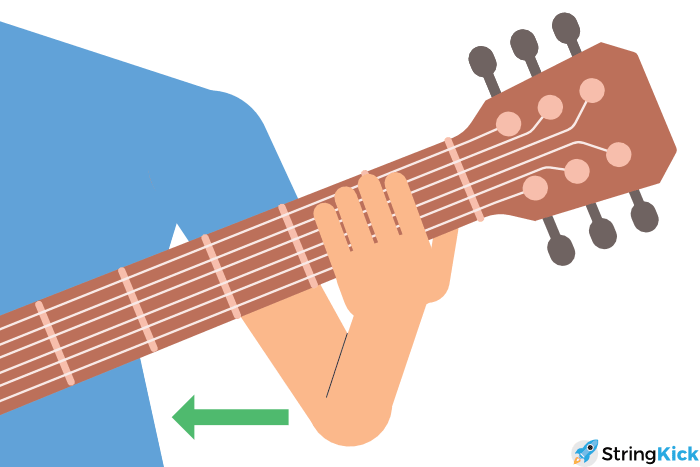
Building Lap Steel Guitar Pdf Pic
(Image: © Shane Speal) This is one of the easiest homemade guitars I've ever built, and it took me only an hour to make. This lap steel was made from an extra 2x4 I had in my shed, with just a few saw cuts to the wood. I even used a pre-wired acoustic sound hole pickup, so there was no wiring needed. Anybody can build this lap steel guitar! The lap steel plays great, too. It's set up with a standard 23-inch scale, just like the store bought-lap steels!
The whole thing feels great on your lap and looks absurdly cool. Here’s a quick video (below). As you can tell, I’m still learning how to play this properly. (I built it so that I could learn how to play it). These plans will give you a very basic, yet absolutely playable lap steel.
It might look like a lot of steps, but trust me, this instrument is easy to build. You are basically just marking down a few lines, making a couple cuts to the 2x4 and installing simple hardware. This is my first prototype 2x4 lap steel. I have a second one on the shop table right now.

Look for a followup column on installing better pickups and adding some cool “hobo” mods. Parts needed • 32” section of 2x4 pine lumber. (Note: Due to harmful chemicals, do not use pressure-treated lumber!) • Two (2) 1/2” diameter allthread rods, 3.5” long (Allthread rods are like bolts without a head. You can find these at hardware stores. I found a box of them at a flea market.) • One pack of guitar tuners, three-to-a-side • Pre-wired acoustic soundhole pickup • One pack of medium-gauge electric guitar strings. Tools needed • Electric drill + two drill bits: 3/32” and 5/16” • Table saw or circular saw • Small screwdriver. Directions 01.
The good news is the lap steel is one of the easiest instruments to build, with a basic. I generally build my guitars with 3/8” string spacing at the NUT because that's what most. MAKE SCRATCH PLATE (PICK GUARD). PDF directly, (PDFs can be zoomed with little loss of detail) or save the file to CDR or flash. Mar 17, 2011 - HOW TO BUILD A PRIMITIVE LAP STEEL GUITAR I recently got a hankering to build a lap steel guitar. I started looking at pictures and looking.
Management solutions to help them make better portfolio management decisions, evaluate the risks and rewards associated with projects, and determine whether there are sufficient resources with the right skills to accomplish the work. Primavera p6 license crack download. Companies turn to Primavera project portfolio. These best-in-class solutions provide the project execution and control capabilities needed to successfully deliver projects on time, within budget and with the intended quality and design.
Cut a standard pine 2x4 into a 32” length. Cut out the headstock: Turn the 2x4 on its side and mark a vertical line 4” from the left end. Mark a horizontal line 5/8” from the top (as pictured). Cut away the bottom portion in the headstock area (shaded are in the picture). I used a dado blade on my table saw. You can also do the same thing by running the saw in multiple passes over the shaded area and then using a chisel to remove any extra wood chips. Optional: I smoothed out the underside of the headstock on my belt sander.
It also provided a little heel curve. Drill tuner holes: Mark your tuner holes on the underside of the headstock. I went in about 5/8” in on each side and spaced the tuners roughly an inch apart. Use a 5/8” drill bit to drill the tuner holes. Turn the 2x4 back over and the following marks on the board, starting from the butt end and going up toward the headstock: a) 1.5” (this will be our through-body string feed) b) 3” (bridge location) c) 4.5” (pickup cavity) d) 6” (pickup cavity) e) 26” (nut location) 06.
Cut out the pickup cavity: Notch out the wood between the 4 ½” and 6” line. Go about ¾” deep. Use the same dado technique as above with the headstock. Drill the string feed holes. Use a 3/32 drill bit to drill six holes for the strings to feed through the body.
Quite honestly, I eyeballed these holes. The rough measurements from left to right are: 3/4”, 1 1/8”, 1 ½”, 2”, 2 ½”, 2 ¾” 08.
Mark your fret guides: Measure out the frets by starting at the 26” nut location and making pencil marks for each fret location. Then use a contractor’s square to draw the fret lines. (I used a Sharpie for some quick and dirty fret lines. You also can paint or woodburn them if you want.) Fret markers*: 1 1.29” 2 2.50” 3 3.65” 4 4.74” 5 5.76” 6 6.73” 7 7.64” 8 8.51” 9 9.32” 10 10.0” 11 10.8” 12 11.5” 13 12.1” 14 12.7” 15 13.3” 16 13.8” 17 14.3” 18 14.8” 19 15.3” 20 15.7” 21 16.1” 22 16.5” 23 16.9” 24 17.2” 25 17.5” 26 17.8” 27 18.1” 28 18.4” 09. Optional: Carve grooves for bridge and nut.